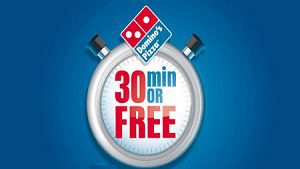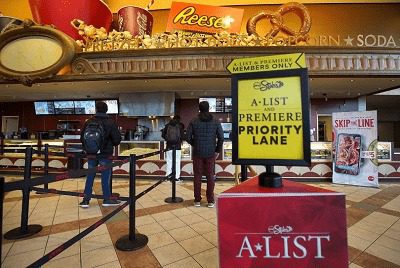As our economies re-open post-pandemic, consumers are experiencing more queues and limits than ever before related to store and service interactions. The stores are just so happy to be open, and focused on ensuring they meet regulations relating to social distancing, that most are completely ignoring their queue experience (QX). They are seeing it as something functional as opposed to experiential, missing opportunity and causing negative customer experiences.
David Maister wrote a great article over 35 years ago entitled “The Psychology of Waiting Lines.” Up to that point, most of the research focused on efficiency and queue management as opposed to how it made shoppers ‘feel’. His key points remain as true today as they did then, and I will draw on some of his work here, alongside my own opinions.
Six Tips for Understanding And Maximising Your QX
1. Occupy Your Customers
If all you’re doing is waiting, that wait can feel very long. In 1950s New York, queue strategists turned their attention to elevator waiting times in a bid to address tenant complaints in the new skyscraper era. By installing full-length mirrors in elevator lobbies, those waiting could occupy themselves by self-preening or watching others. This simple addition reduced ‘perceived’ waiting time so significantly that the complaints disappeared.
Advertisement
If the queue does not look to somehow occupy the user, you have fallen at the first QX hurdle. That two-sided laminated menu thrust into your hand as you wait in line at an airport restaurant occupies you, and you are already ‘consuming’ the service before even stepping into the restaurant. They have also ‘hooked you’ to a degree, committing you to what you might eat.
So look to occupy your customers in the queue, but do it with something that is relevant. Look to add brand equity and to the overall experience. Don’t just throw up a digital screen or shade awning with water and think that ‘something is better than nothing.’ View that queue as halo-effect gold and treat it as such. Use it as a first CX touch point.
2. Get Customers Started
One of the biggest unknows today is how many customers are walking away from physical queues. Today many customers intend to engage with a retail or service experience, but seeing the queue, they walk away. The business owner often doesn’t see or measure these lost sales walking away. You have to engage your customers early, the moment they join the queue or even see it.

Ever notice how fast a host might meet and seat you in a restaurant, hand you a menu, and then inform you your server will be with you shortly? You think the experience has now begun, but in reality, that server/kitchen may not be ready for you at all. But get the customer started and they are more content.
Look to see what you can do in the queue to get them started. Can they browse stock digitally if it’s a retail experience? Can they make choices or get more informed during the queue time? Can you take orders from the queue, offering a pay/collect option rather than a store browse?
3. Uncertainty Breeds Disdain
Not knowing how long you are going to be waiting is never fun. Pre-mobile phone, you just had to stand there, hoping a date would show up if they were running late. Introduce uncertainty to any situation and you also introduce customer anxiety, and now you are about to start off your service or retail experience with a customer already primed to be less than happy.
Most decent theme parks have a queue management system that clearly displays the ‘waiting time for this ride’ digitally at every queue entrance. It is often over-estimated on purpose, thereby pleasantly surprising a customer. It is the same trick Ryanair, Europe’s low-cost airline, use for their arrival times. By adding 30 minutes on to every flight time, they over-estimate their journey times so that you will arrive ‘early’ or at least on time. And 1950s elevator academics learned this too, which is why they installed the floor indicator dials after the mirrors. As long as you can see where the elevator is, and is coming from, then your wait is more certain.

Introduce certainty to your customers in the queue. Domino’s Pizza famously made their “30 minutes or it’s free” promise in the 1980s, creating certainty around delivery times for customers. If you have just made a customer queue for 45 or 60 minutes to ‘consume’ your product, perhaps they deserve a discount voucher or a priority pass for their next visit. Give them some certainty about their next visit.
4. Keep Them Informed
An unexplained wait is worse than the same wait with some information. As a teen I worked at a holiday camp take-out diner, where we worked eight- to 10-hour shifts on those peak season days. We all needed a break at some point, but we learned to eat out back sitting on crates. Don’t have staff visible on breaks when there are long customer queues. Those customers see an unused ‘resource’ and get angry in their queue. They don’t care that you haven’t had a break for six hours, they just want their food, and worse they see you eating it!
Learn to manage your customers’ expectations at all times in the queue. Explain delays. Explain why the queue is moving as it is. Keep them informed at all times. This is all about managing expectations. Unmanaged, they are often unmet.
5. Be Fair And Play Nice
We all have concerns over fairness in the queue. If someone gets to skip ahead of us, we get upset, aggrieved. This is a difficult one to manage, but again it is about clear communication and customer expectation.
These new queue experiences allow us to introduce priority access. Pay us more and you can access the experience before others. Some people are happy to pay the standard ticket price and queue for one hour per ride in a Disney theme park, others (myself included) factor in the extortionate cost of the ‘Fast Pass’ to the cost of the visit.

You have to balance priority passes with fairness, but brands have given their loyal customers perks over others for a long time. Your queue is now a pain point in a customer journey, one you can remove for important customers. It is a way to reward brand loyalty, the equivalent of the security guy lifting the red velvet rope for you. It makes you feel special and rewards your business.
6. Manage Their Mental Health
We have all experienced the anxiety about which queue to join or being in the wrong queue. The other line always moves faster, of course. The serpentine queue aimed to remove that anxiety. Its downside was that it appears longer, so it may result in a higher walk-away rate. It is also harder to manage at peak times as it grows, often snaking around a store or even blocking merchandise access. But tying in with fairness, serpentine queues are always fair. They also move faster. As the one queue you are in is being served by several staff, you generally make more perceived progress in a serpentine queue. Standing still in a queue is demoralising, but you brighten up with every step you take. Keep them moving.
The more anxiety is involved, the longer the perceived wait will be and the lower the QX and overall CX. It is your duty as the brand to create a positive queue experience. Many businesses are falling foul of this right now, their queue a cold, functional, anxiety-ridden ride for customers.
So let’s take all that and apply it, and look at 10 ideas to improve on the disastrous approach taken by some retailers:
- Consider gamifying your queue experience, and entertaining those waiting;
- Install a stock-checker kiosk so shoppers can make sure you actually have what they want in stock before queueing for hours;
- Have queue runners working the queue, applying triage to those joining. Perhaps they only want a single item, know what it is and they can be ‘serviced’ with an in-store runner, paying outside the store with a contactless terminal;
- Change the nature of the queue experience regularly if customers are going to be frequently queueing;
- Treat your QX as a source of competitive advantage by differentiating it strongly from competitors;
- Consider a booking system (like Open Table) as opposed to a queue, or allowing shoppers to digitally hold a place in the queue from their cars;
- Surprise and delight your queuing customers. Use it as a sampling opportunity or partner with brands that will;
- Consider segmenting your total store and having several access queues. if I am entering a DIY store for Garden Products and Plants, why am I joining a two-hour weekend queue for the total store when I only want to visit the outdoor garden section? Consider multiple entrances/exits and flow to optimise QX;
- Invest in click/collect and online ordering to dilute that queue in the first place; and
- Utilize digital in tandem. I can join a long line at a hotel reception to check in or I can use the check-in kiosk. The digital kiosk is more valuable the longer the physical line.
It is important to remember that we are still a generation of Instant, I Want it Now. We are used to a one-click, one-swipe world where we instantly get shown or buy what we want. That mentality and demand is still there. The queue undermines those desires, and so it is inherently important that we optimise QX at every opportunity.
For more on the psychology of queuing watch this clip.
Ken Hughes is a leading shopper and consumer behaviouralist, CX strategist and internationally known keynote speaker. He has spoken at the Retail TouchPoints Retail Innovation Conference and been interviewed for Retail Reset.














